Laptop Mag Verdict
Dying Light 2: Stay Human injects some new blood into the series with a more varied landscape, an expansive campaign with multiple endings and tighter combat.
Pros
- +
Engaging story mode
- +
Unique blend of gameplay
- +
Co-op mode saves progress for all players
- +
Story decisions impact gameplay and endgame
- +
Excellent parkour movement and combat progression
Cons
- -
Combat feels glitchy at times
- -
Lots of fetch quests
Why you can trust Laptop Mag
Dying Light 2: Stay Human arrives seven years after the original, the eagerly anticipated follow up to the hit survival-horror parkour game (sure, that old genre) suffered a number of delays and development issues along the way, but that’s a pretty common story in recent years.
While Dying Light 2 doesn’t stray too far from the formula that made the original a success, that is far from criticism. It packs such a unique blend of action, adventure and RPG components into a pretty compelling story (with multiple endings) with strong performances from the voice talent.
Leaping across rooftops, scaling windmills, paragliding through the ruins of a once-great city and then dropping down to draw your electrified machete and facing off against the hordes of infected in the city below just doesn’t get old quickly. Developer Techland claims there is up to 500 hours of content to 100% the game, so there’s plenty there to test that theory.
While the zombie genre feels a bit overserved in video games, Dying Light 2: Stay Human feels like a breath of fresh air, which is particularly welcome with the fetid stench from all of those zombies.
Do you need to have played the original Dying Light?
The short answer is no. While the games take place in the same universe, the only real through-lines are the overarching story of the outbreak, the fallout from that event and one key organization. So from a world-building perspective, you may appreciate knowing what happened in the original, but you aren’t missing any critical information by skipping it.

Spoiler-free overview of Dying Light 2: Stay Human
I’m sticking to the basics as the central plot and diverging decisions you make in the game are core to enjoying the campaign. Dying Light 2: Stay Human is set 20 years after the events of Dying Light, so society has settled into the post-apocalyptic reality. It’s an essentially medieval society surviving in the ruins of the old world with some limited technology hanging on.
You play as Aiden Caldwell and you are what is known as a Pilgrim. You travel across the country and serve as a courier between cities and as a desperado for hire. You have spent most of your life searching for your sister Mia and that is what drives you to the City as the game opens. There are three factions that you have to deal with in the city: the Peacekeepers, the Renegades and the Survivors. It’s not an all-or-nothing commitment to any of them, but aiding any of them has trade-offs.
Sign up to receive The Snapshot, a free special dispatch from Laptop Mag, in your inbox.

Survival horror parkour!
In the same way that I can spend hours web-swinging around NYC in Spider-Man: Miles Morales, there is something incredibly satisfying about wending your way through the cluttered streets and crowded rooftops of Dying Light 2. It didn’t start out that way. In my first couple of hours with the game, I felt like the first-person perspective made the frenetic movement difficult to control. However, another hour or two and a couple of stamina and parkour skill upgrades later, I was happily ricocheting across the rooftops to avoid the hordes of undead shuffling along the streets.
While the skill tree isn’t massive, it’s enough to give you the feeling of some control over your style of play. Some of the basics are the most impactful as they allow you to fall farther without taking damage, sprint up a wall a few feet to grab that ledge that would have been just out of reach, or pull yourself up on that ledge despite being out of stamina.
As the game progresses, you can unlock changes to the environment that will make traversing the city faster and easier, like set zip lines and winches. New tools as you progress like the paraglider and grappling hook dramatically transform the game from what you’ve become accustomed to in the early going.
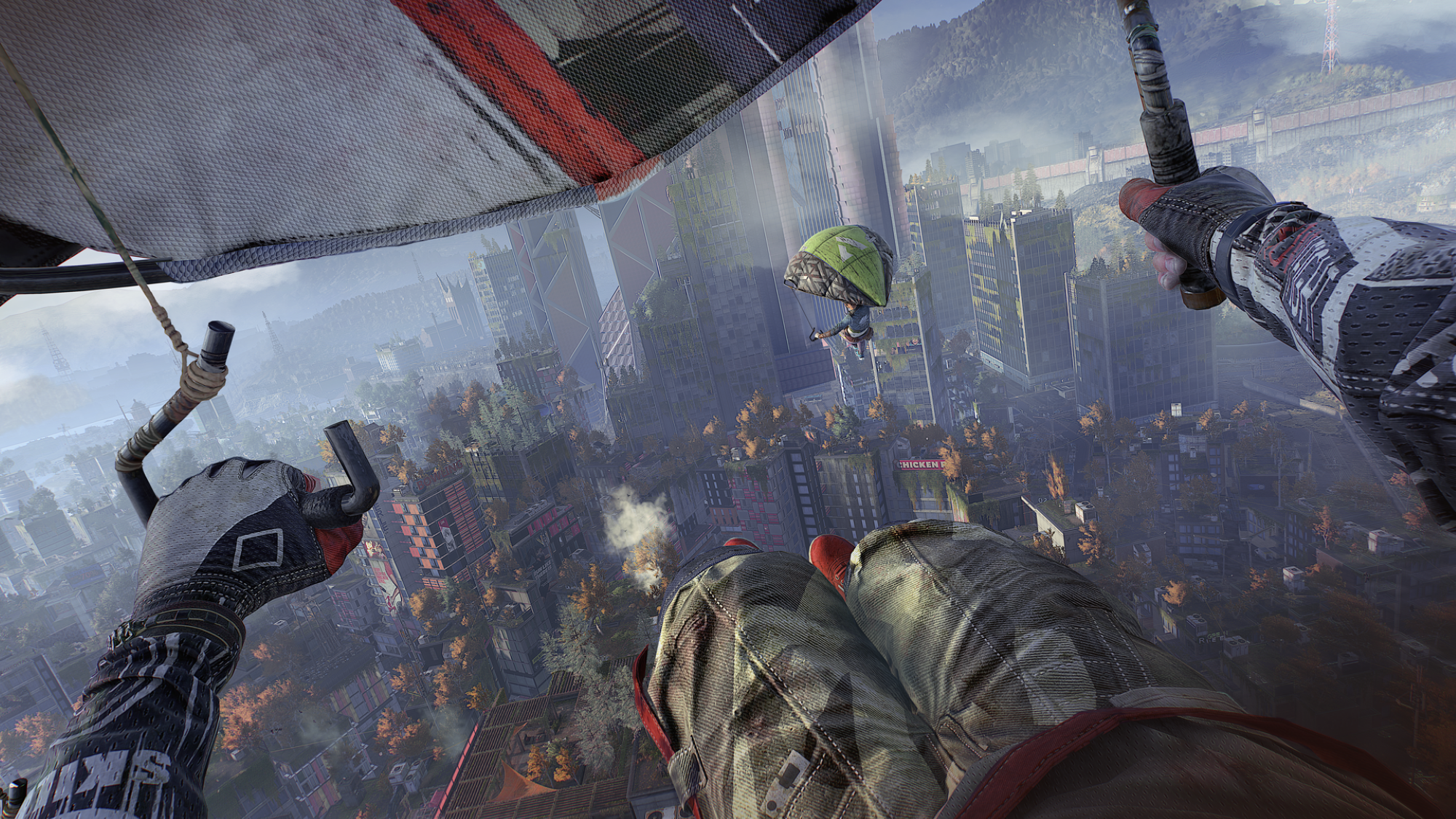
My one minor complaint with the traversal mechanics in Dying Light 2 is that it is unclear at times what you can grab onto. In areas with a specific climbing/traversal challenge, like the windmills that you must scale and repair to claim specific areas, the intended spots are always painted or otherwise constructed with something yellow. In the world at large, it’s a bit more of a learning experience; there is some building geometry that certainly looks like you could scale it, that will have you just scrambling on the side of the wall as the infected drag you to your doom. You eventually get a pretty solid handle on this, but in the first couple of dozen hours, you will likely make more than a few leaps that end with “You are dead” smeared across the screen like Aiden on the pavement.
That last quibble aside, the movement in Dying Light 2 feels outstanding, a blend of some of the best of Assassin’s Creed, Spider-Man, Breath of the Wild and Far Cry. I could spend hours just running around the environment, which is a good thing because there are many fetch quests.

Good. Bad. You’re the guy without a gun.
Unlike the original, there aren't guns in Dying Light 2 (the aptly named boomstick doesn't really count), but rest assured you have a varied arsenal for dealing out punishment to the masses of undead, bandits and others that would do you harm. Weapons range from broken shovels, hammers and machetes to later bows and crossbows. Some weapons support modding, which allows you to add special abilities to them via a number of available slots. All weapons have a durability score that wears down and will ultimately break, so it's wise to keep a healthy supply of weapons on you as having to resort to your fists won’t go well.
Weapons have a discernibly different feel to swinging them based on their weight and whether they are blunt or bladed. A hefty two-handed ax takes some serious stamina to swing and really thunks into your opponent. At times, the kills are ruthless, with a severed limb or head flying off and the remaining stump continuing to gush as the body drops to the ground. I’m not sure if it’s a bug or an intended feature, but the bodies will occasionally continue spasming for several seconds after the kill. It's particularly off-putting as you stand over a corpse waiting to search it.
Combat is the other skill tree in the game, and it’s deep enough to feel like you have crafted a fairly unique character while not being overwhelming. You can optimize for ranged attacks, stealth fighting, fast-moving attacks or more of a tank of a character. Hacking your way through a horde of zombies in the street or a group of bandits is a bit of a challenge in the early going, but like parkour, you will quickly start to feel superhuman as you add a few skills, health and stamina points.
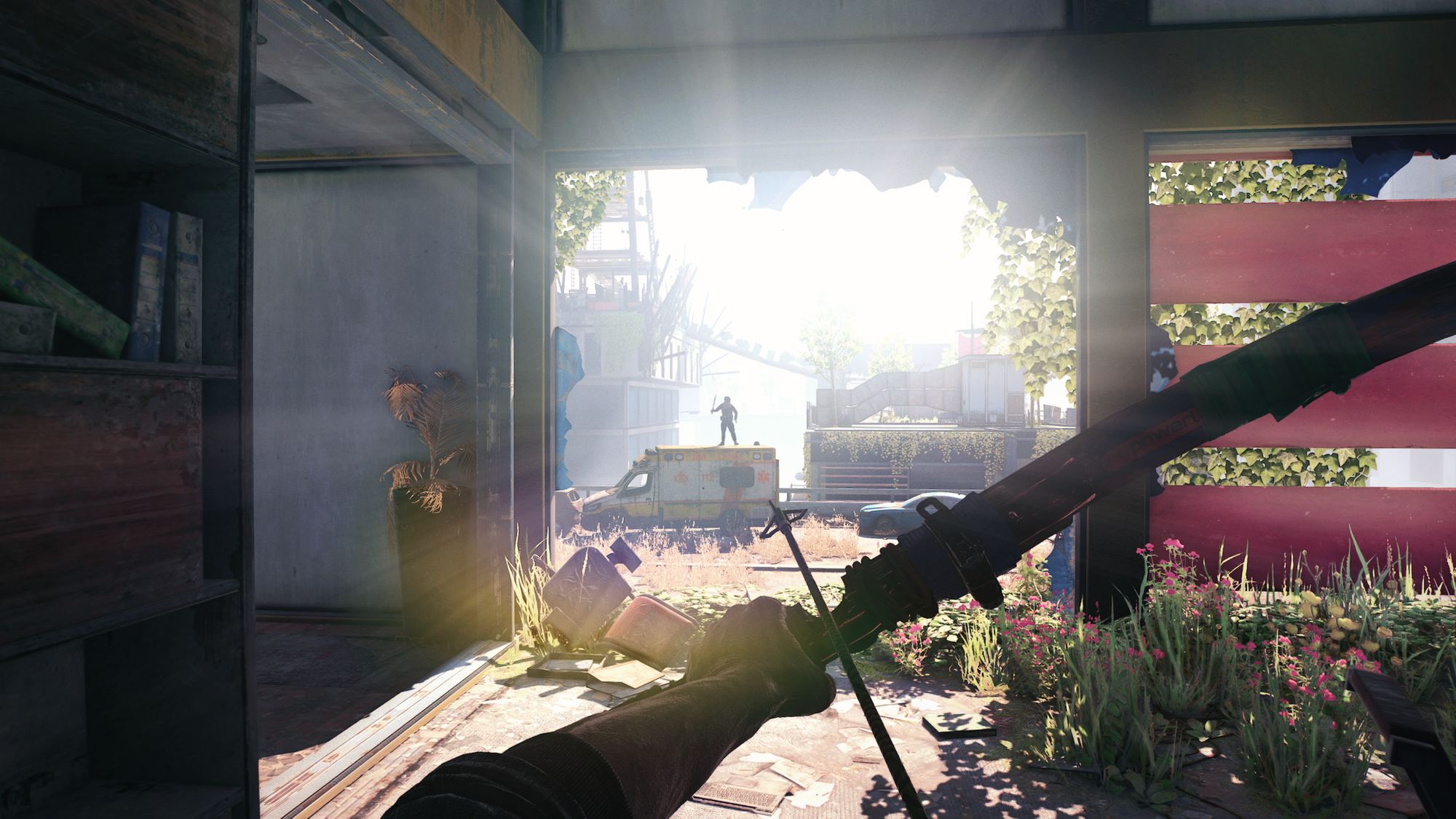
The mini-boss and boss fights get a little trickier, but the AI isn’t much of a challenge in general. It’s the fact that you often have a horde of infected coming after you that typically makes it tougher and similarly, you are usually squaring off with at least three human combatants. You would be hard-pressed to handle the volume of attackers if the AI were any better than it is, so ultimately, it is probably the right choice; it just can start to feel a little repetitive if you don’t mix up weapons and strategies from time to time.
Combat was notoriously pretty clunky in the original Dying Light, so this is a massive step forward for the franchise, but I still ran into the occasional issue. The most frequent involves one of the earliest combination attacks you get in the game that allows you to vault over a stunned opponent and kick another. It’s a straightforward combo, but it fails too often. The latter comes up most frequently in mini-boss and boss battles, but weapon reach will sometimes become vastly different mid-fight, making dodging an impossibility. I’m hopeful Techland addresses these bugs in a future update as overall, the combat is solid and once you’ve leveled up enough skills it gives you enough variety to keep things interesting.
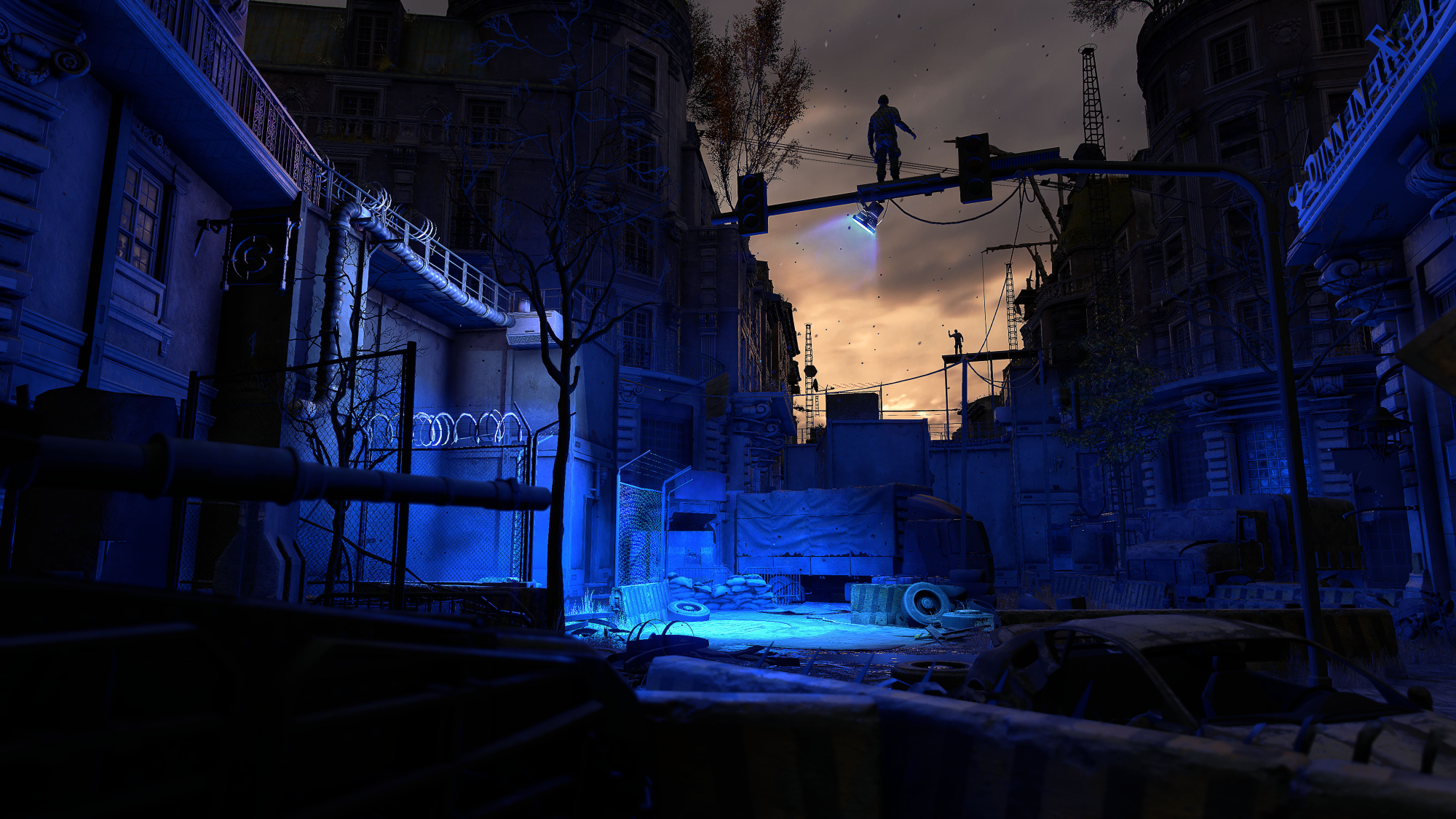
A hard day’s night
The day-night cycle in Dying Light 2 features some changes from the original as the Techland team sought to incentivize players better to travel out into the city after dark. While some of the infected are always shambling about the city whether it’s day or night, the infected party kicks off in earnest once the sun sets.
Far more infected are on the streets after dark and a more varied assortment. The virals are the recently infected that won’t go out in the sun and are considerably faster than the biters that you run into during the day. Volatiles are even more agile and will take you down in the open if you can’t escape. Demolishers are massive brutes that are glacially slow, but have a long reach with their clubs and will crush you in just a few hits early on. Howlers call out to the rest of the infected in the area if they spot you, which initiates a chase sequence similar to GTA, building from 1 to 4 stars if you can’t evade notice. Finally, banshees with massive claws that leap long distances and revenants power-up nearby infected.
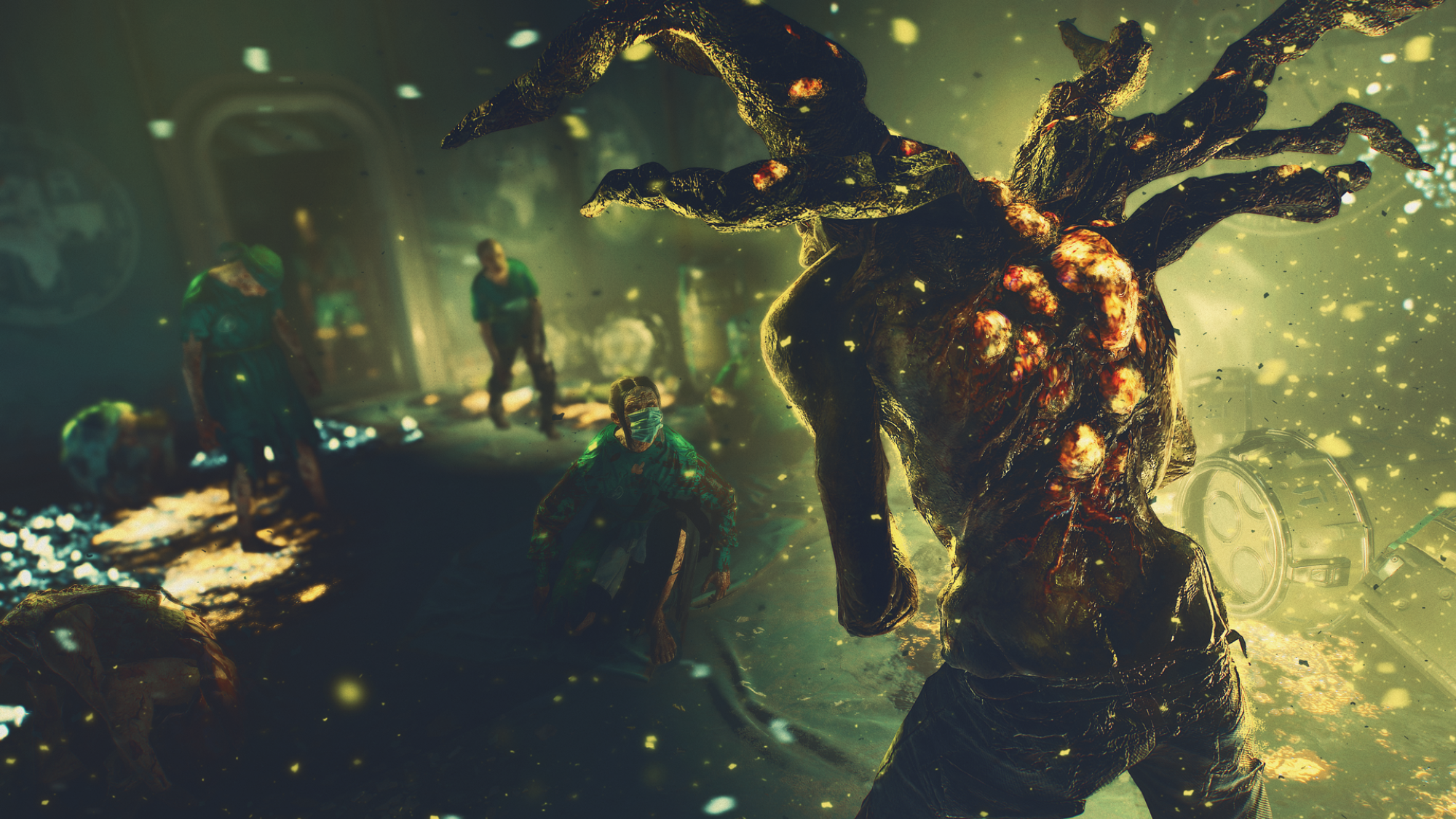
So what’s the motivation to head out into that? Many missions have to be completed at night. Some of these are just areas that can be raided at night for gear and items, because naturally all of those infected wandering the streets aren’t hanging out in their indoor nests. There are also areas where you must defeat a specific infected to gain access to an inhibitor or other precious resource.
If you get the settings right on your display, and are just operating with the cone of vision provided by your (thankfully endlessly charged) flashlight, there are some terrifying moments roaming the streets of the City at night. Added to this is a ticking clock as you are also infected and must either ingest UV shrooms, take a UV inhibitor or seek out UV lights before the countdown hits zero and you are turned.
While you can mostly avoid going out at night, you are missing out if you do; it’s some of the most harrowing action in the game.
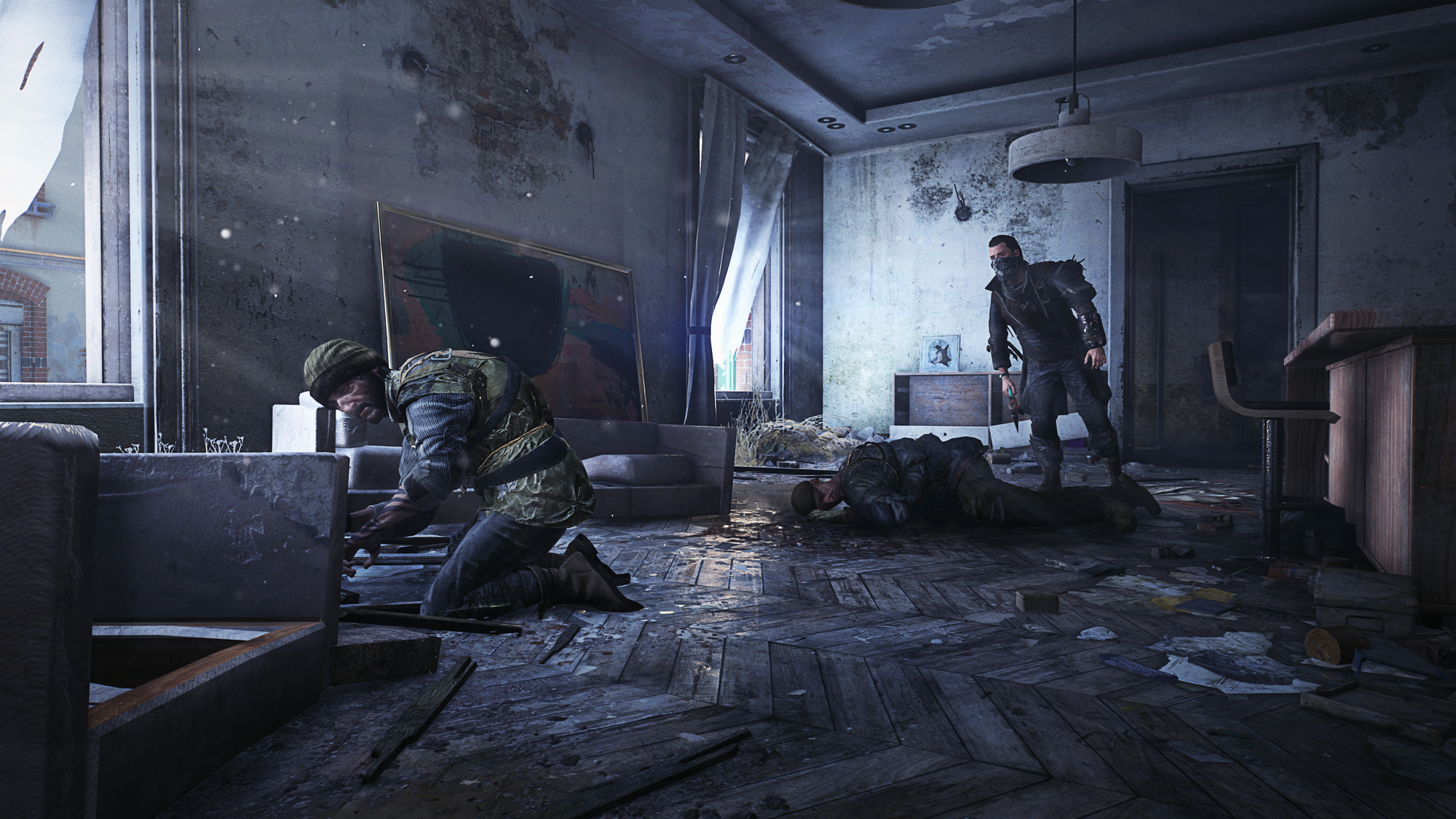
Look at this stuff, isn’t it neat?
Like Fallout or almost any RPG game, there is an extensive crafting and item collection component to Dying Light 2. Some of it is just stuff that you can sell back to the shops in the various communities you visit, while others are vital for your survival as you will use them to modify or craft weapons, make medicine or tools like lockpicks.
There is a huge spectrum of blueprints for you to find or purchase to make life a lot easier for you. You can also upgrade these blueprints as you go along, so your homemade medicine is a little more potent to use one common example. I know not everyone loves crafting in games, but overall, I found it to be useful and not overwhelming as you stumble upon the ingredients for the most common crafting items you need often enough.
The volume of other random flotsam and jetsam from the old world that you find, on the other hand, seems unnecessary to me. You do absolutely nothing with it other than selling it and I have a hard time imagining why some of it would have value in the world of Dying Light 2. Early on, I imagined that perhaps you would barter with it or use these items for crafting or for advancing skills, but there’s just a lot of stuff that you are just gathering up to sell. You need to do it to afford to buy useful items from the traders, but it gets a little tiresome. This is hardly unique to Dying Light 2, it’s a common trope in the genre, but I’d love to see someone break from it.
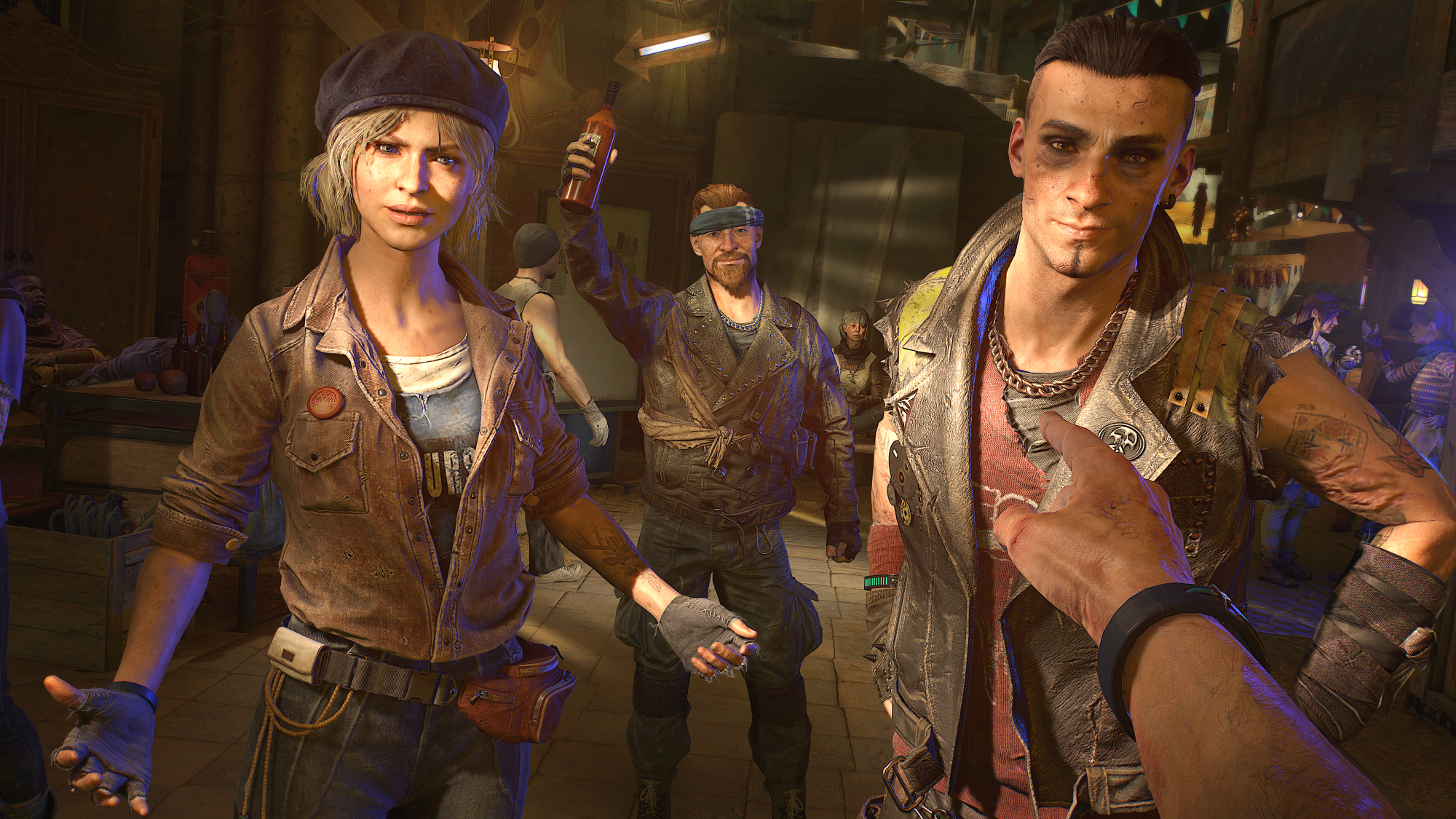
It’s dangerous to go alone! Take this.
While Link’s sword would be great to survive in the game, in this case, I’m referring to bringing a friend or three. Dying Light 2 offers co-op support for up to four players. The game can be played in co-op straight through to the end. The player hosting the game will dictate where they are in the action, but others joining will retain their progression made during the co-op play.
As I mentioned previously, there are many points in the game where you need to make a decision that will impact the outcome. In co-op mode, everyone gets to vote on these decisions, but the host makes the ultimate decision.
There are some notable limitations to co-op mode. You cannot play cross-platform, so hopefully, you have only made friends with other PlayStation, Xbox or PC players, just as the console and PC wars intended. At launch, it’s even more aggressive than this as you can’t play co-op across generations, so no PS4-owning friends for PS5 owners either. Techland will address this in a future update, but hasn’t offered a timeline yet.

Dying Light 2: Stay Human PC performance
I’ve split my time with Dying Light 2: Stay Human between both my Asus Zephyrus G14 (2020) with its Ryzen 9 processor, Nvidia GeForce RTX 2060 Max-Q GPU and 16GB of RAM and my PS5.
I’ve spent considerably more time playing the game on PS5, largely due to being able to play it on the 65-inch TCL TV that I’m in the midst of reviewing, but I was impressed how well the Zephyrus G14 held up, it can’t deliver ray-tracing, but it was able to keep up just fine at 60 fps. I didn’t encounter any performance issues during the game that were attributable to the laptop and while another patch is coming, a January 31update addressed my most pressing concerns for the PC version of the game with objects and enemies occasionally sinking into the environment.

Dying Light 2: Stay Human PC requirements
Whether you are just looking to eke by with the minimum acceptable specs or you want the absolute pinnacle of performance from the game, here’s a look at what you’ll need in your PC to run Dying Light 2.
With ray-tracing off the bare minimum specs to run Dying Light 2 at 30 fps in FHD on low quality are Windows 7 with an Intel Core i3-9100 or AMD Ryzen 3 2300X, 8GB of RAM, at least a 60GB HDD and an Nvidia GeForce GTX 1050Ti or AMD Radeon RX560 4GB. The recommended specs with ray-tracing off for 60 fps in FHD on high quality are Windows 10 with an Intel Core i5-8600K or AMD Ryzen 5 3600X, 16GB of RAM, at least a 60GB SSD and an Nvidia GeForce RTX 2060 6GB or AMD RX Vega 56 8GB.
If you want ray-tracing on, things ramp up just a bit. The minimum specs for 30 fps at FHD on low are Windows 10 with an Intel Core i5-8600K or AMD Ryzen 5 3600X, at least a 60GB SSD and an Nvidia RTX 2070 8GB. For top-end ray-tracing at 60 fps in FHD on high-quality, you need Windows 10 with an Intel Core i5-8600K or AMD Ryzen 7 3700X, 16GB of RAM, at least a 60GB SSD and an Nvidia RTX 3080 GB with 10GB of VRAM.

Bottom Line
Dying Light 2: Stay Human isn’t reinventing the wheel, but it didn’t need to; the original did that. If this were the fifth installment in the Dying Light series, I might be looking for more of a change-up, but for a sequel, this hones the rough edges of the original and adds enough new components to keep things interesting for old fans and those just jumping in for the first time.
The multiple endings, large open-world with compelling side quests and Techland’s promise to support Dying Light 2 with added content for at least five years all make this game an easy day one recommendation. I’m dozens of hours in already and despite the murders’ row of games coming out soon, I can’t imagine moving on from Dying Light 2 right now.
Sean Riley has been covering tech professionally for over a decade now. Most of that time was as a freelancer covering varied topics including phones, wearables, tablets, smart home devices, laptops, AR, VR, mobile payments, fintech, and more. Sean is the resident mobile expert at Laptop Mag, specializing in phones and wearables, you'll find plenty of news, reviews, how-to, and opinion pieces on these subjects from him here. But Laptop Mag has also proven a perfect fit for that broad range of interests with reviews and news on the latest laptops, VR games, and computer accessories along with coverage on everything from NFTs to cybersecurity and more.


